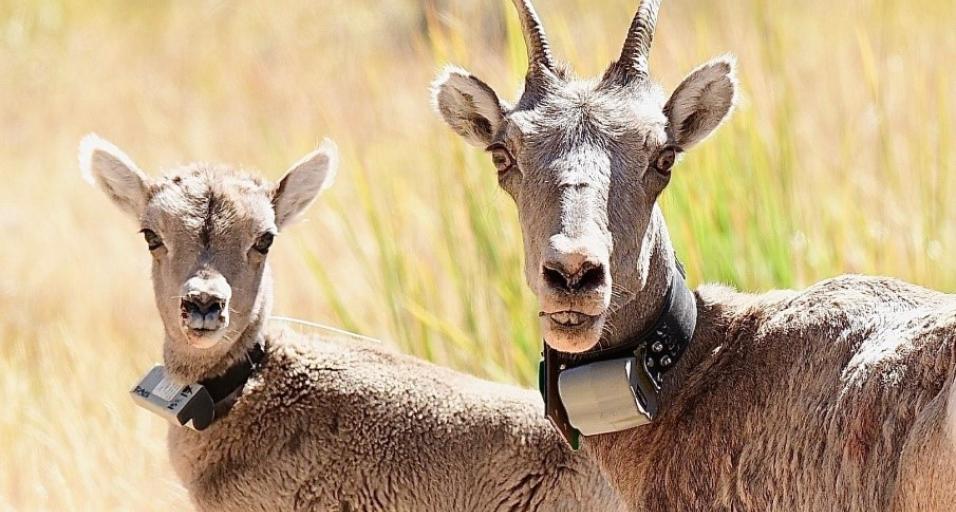Photo by Bill Sincavage. Collared ewe and lamb near Trail Lake outside of Dubois.
Article written by Project Leads Brittany Wagler and Rachel Smiley and Principal Investigator Kevin Montieth.
We just wrapped up our 2nd summer field season in the Whiskey and Jackson herds. This year we had a bare-bones crew because of COVID-related restrictions; however, we are grateful to be able to continue our work. Thanks to the generosity and dedication of our shop mates and core collaborators, we captured 20 lambs (11 in Whiskey and 9 in Jackson). Consistent with our findings last year, causes of mortality such as predation (n=3), abandonment (n=2), and accidents (n=2) occur within the first two weeks of life. Later in the summer, pneumonia has been the primary cause of mortality (n=3), though we did not see any pneumonia mortalities in the Jackson herd during the summer. In October, one lamb died in the Jackson herd with pneumonia, compounded by another infection. To date, there is 1 collared lamb alive in the Whiskey Herd and 5 in the Jackson herd.
At the end of lambing last year, we wondered if we would see fidelity to birth sites in bighorn sheep as we do in mule deer. A few ewes gave birth in similar areas as last year, though not in the exact same spots. One ewe gave birth within 100 meters of where she gave birth last year, but most ewes gave birth farther away from their previous year’s birth site. Two ewes that gave birth near Red Creek in 2019 gave birth on Goat Flat and near Downs Lake this year – a difference of 12 miles and 5500’ of elevation gain between birth sites. One Jackson ewe did the opposite. Last year she gave birth in the mountains overlooking Granite Creek but this year gave birth near the Gros Ventre Road in the Grey Hills, which is her winter range, 14 miles away from last year’s birth site. This leaves us asking what factors drive bighorn sheep migrations and timing of birth—a topic we hope to explore in more detail in the future.
We are continuing biannual adult captures, habitat assessments, and monitoring lamb survival as we work to understand the disparity in population performance of bighorn sheep infected with pneumonia. With critical support from the Wyoming Game and Fish Department, Wyoming Wildlife and Natural Resource Trust, Wyoming Governor’s Big Game License Coalition, Bureau of Land Management, Wyoming Wild Sheep Foundation, Wild Sheep Foundation, Bowhunters of Wyoming, Wyoming Wildlife/Livestock Disease Research Partnership, and the Teton Conservation District, our team will continue to work towards identifying connections between nutrition and disease in bighorn sheep to seek possible solutions to aid in keeping sheep on the mountain.
Bighorn sheep lamb collaring project - a 2020 update
Greg Anderson 307-332-2688



